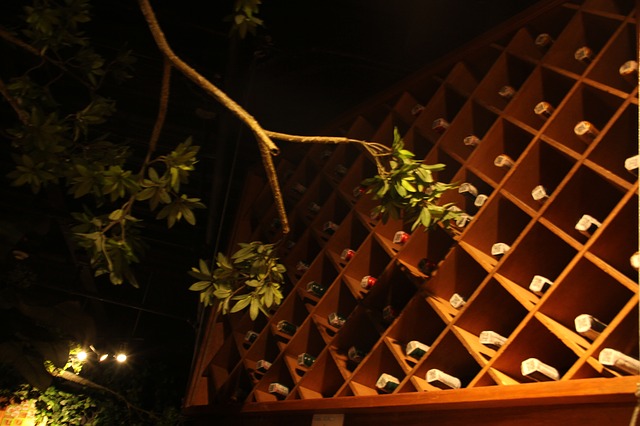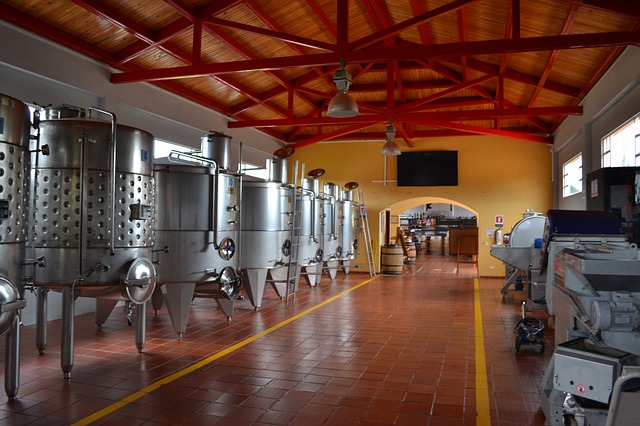Wine has been consumed throughout all the recorded history. Wine lovers are known for their passionate curiosity. If you really want to learn about wine, you need to drink experimentally. Curiosity results in a much deeper enjoyment and association with what is in the glass.
Da Vinci thought that man’s senses were the gateway to the soul and we should approach life like the miracle that it is. Da Vinci was well-known for looking at objects from different perspectives. An exciting way to intensify your experience with wine is to take a well thought-out approach to tasting it.
Blind wine tasting parties with other wine lovers are great fun. Taste the wine, make notes, choose favourites and discuss the results. The exercise with wine will bolster an understanding of wine and help to decide on your own preferences.
Wine making has been around for thousands of years, and it all starts with the fruit. Most amazingly is that nature provides almost everything that is needed to make still wine and each wine is unique. The person engaged in wine making is referred to as a winemaker or vintner and the science of wine making is known as oenology.
The process of making still wine
The process for making white wine and red wine is basically the same. The steps of wine making include:
- Harvesting: Grapes must be harvested at the precise time. Harvesting can be done by pickers (people picking the grapes) or mechanically. Mechanical harvesting is common in Australia and New Zealand, because of labor shortages. Many winemakers prefer the grapes picked by hand as mechanical harvesters are often too tough on the grapes. The grape bunches are sorted at the winery. Rotten bunches are removed.
- Crushing and pressing: The grapes are crushed. Red wine is made from pulp (must), and the fermentation occurs together with the red or black grape skins. The red skins give the wine its color. White wine is made by pressing crushed grapes to extract the juice.
- Fermentation: Fermentation usually begins within six to twelve hours after the grapes were crushed or pressed. Yeast may be added to start the fermentation process. Fermentation is the process where sugars are converted into ethanol (alcohol). The alcohol level can vary from ten percent in cooler climates to fifteen percent in warmer climates. Sweeter wines are produced by stopping the fermentation process before all the sugar is converted into alcohol. The entire process is controlled by the winemaker.
- Clarification: Once the fermentation process is completed, the winemaker has to remove the sediment or solids from the wine. This process is done by siphoning or tapping the wine from one tank to another, leaving the sediment at the bottom of the fermenting tanks. Gelatine is commonly used to reduce the tannin content. The wine gelatine reacts with the wine components and forms sediment, which is removed prior to bottling. Gelatine is recognized as a traditional method for clarifying wines. Filtering agents such as betonies (volcanic clay), egg whites, bone char, potassium casein (milk protein) or skim milk powder are sometimes used. Filtration is also used to accomplish microbial stabilization. Organisms, such as yeast and bacteria, can affect the stability of the wine are removed.
- Aging: Aging of wines can be done in stainless steel tanks, large or small wooden barrels or ceramic tanks. Wines can also age in bottles.
- Bottling: Sulphite is added to help preserve the wine and prevent further fermentation. The bottles are traditionally sealed with a cork.
Unique Sherry and Port ageing system
Sherry and port producers from Spain and Portugal developed the Solera (Spanish for “floor”) system, which promotes oxidation during the aging process. Barrels of wine are stacked on top of each other, with the youngest wines on top and the older wines at the bottom.
Up to thirty percent will be drawn from the bottom barrels, and the bottom barrels will be filled up with the wine from the levels above them, and those barrels will be topped up with the wine of the levels above them. The top barrels will be topped up with the new harvest’s wine.
If you should stack eight rows of barrels, and you draw twenty-five percent of wine from the bottom barrels each year, the Solera system will produce wines of an average age of eight after ten years of production. The Solera system produces wines of a consistent quality.
The system is time-consuming and the winemaker can only draw off a certain amount of wine each year. These wines rarely indicate an age on the bottle, but they can contain elements that are well over 100 years of age. In the southern parts of Spain, patrons will order sherry more by name than by brand: fino, amontillado or una Manzanilla. Sherry is also often the first drink of the day in Spain.
The difference between unfortified wine and fortified wine
Fortified wine is a wine with a minimum of 16% alcohol by volume and a maximum of 24% alcohol by volume. Fortified wines are produced by the fermentation of rice, honey, grapes or berries. Fortified wines can also be obtained by the addition of dextrose sugar, cane and beet. Brandy from the same type of rice, honey, berry, fruit or grape is permitted to be added. The regulations of the United States are very specific on fortified wines.
Unfortified wines typically contain 16% or less alcohol by volume. Unfortified wines are made by the fermentation of grapes. Other fruits, berries, rice, or honey is also used for the making of unfortified wines. Winemakers have to comply with the regulations and the addition of pure cane, beet, dextrose sugar or pure brandy should be from the same type that is contained in the base wine.
Different winemakers use different methods

No winemaker is the same. Winemakers, who became famous for the quality of their wines and their mastery of particular varieties and styles, include:
- Michel Rolland is one of the best-known winemakers in the world and an influential Bordeaux-based oenologist.
- Ticino’s Claudio Tamborini was named Swiss winemaker of the year and was honoured for the overall quality of his wines, particularly a merlot that was named best in class for this varietal.
- Armin Diel is well-known for producing top quality Riesling. He is a famed German winemaker at Schlossgut Diel in Germany.
- Randy Dunn produces top quality Cabernet Sauvignon from the vineyards located east of St. Helena in the town of Angwin on Howell Mountain.
- John Duval is known for producing Syrah in the Barossa Valley, Australia.
- Agustin Huneeus is known for his Bordeaux-style blends and established a family portfolio of wines that represent the Quintessa estate in the renowned Rutherford District of Napa Valley.
- Giovanni Folonari is well-known for producing Sangiovese. The Folonari-family is well-known and among Italy’s oldest Tuscan wine families with a winemaking history dating back to the late 1700s.
What do winemakers drink?
One would assume that winemakers mostly enjoy their own wines. Gavin Chanin, winemaker at Price Chanin Vineyards and Chanin Wine Company California, was asked what he preferred drinking. He said:
“To be honest, I don’t drink my own wine very often. I taste it a lot, but I am usually way too critical to sit down and enjoy a glass of my own wine. I liken it to an author sitting down and reading his own books. So what do I drink? It is very important for me to keep an open mind and taste wine from all over. Right now I am drinking a lot of Italian wines, Burgundy, and Sonoma Pinots.”

